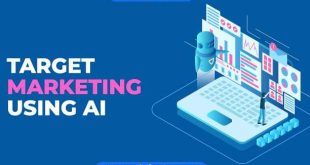Major milestones achieved in the history of computer development are regarded as computer generations with each new generation, computers have become smaller in size, more powerful, and less expensive Each generation of computers are characterized by a major technological advancement that changed the way how computers operate.
You can read here a brief introduction of The Complete History of Five Generations of Computers.
First Generation:
1944 IBM developed the first electro-mechanical computer. Named it IBM Automatic Science Controlled Computer (ASCC) or Mark I.Made from hundreds of thousands of mechanical components.Was huge, slow, and very expensive machine.
1946 Presper Eckert and John Mauchly developed Electronic Numerical Integrator And Computer (ENIAC) Was the first general purpose electronic computer that could be programmed to execute different computing tasks Was thousand times faster than electro-mechanical computers developed earlier Used vacuum tubes for circuits and magnetic drums.
ENIAC was improved further to develop advanced computers based on vacuum tubes, such as Electronic Discrete Variable Automatic Computer (EDVAC) and Universal Automatic Computer I (UNIVAC I). EDVAC was based on the concept of Turing Machine, a hypothetical machine that could store program and data. UNIVAC I was built in 1951 and was the first commercial computer developed in the United States of America (USA).Computers of the first generation used machine language to perform operations.
- Machine language consisted of only binary 1s and 0s which:
- Was very difficult for programmers to work
- Could not be easily debugged
- Executed only one job at a time
- Executing a large program involving multiple routines was tedious and time-consuming.
Second Generation:
It Was built using transistors instead of vacuum tubes. A transistor is an electronic device made of semi-conductor material. Advantages of transistors are as follows:
- Faster
- Smaller
- Energy-efficient
- Reliable
- Cheaper than vacuum tubes
- Generates virtually no heat in comparison to vacuum tubes
The second generation of computers used punch cards for individual input and tapes for batch input and printouts for output. Memory used in these computers was based on memory core technology. These computers used symbol-based or assembly language. Symbolic languages allowed programmers to specify instructions in words. Higher-level languages, such as COBOL and FORTRAN were also developed during the second generation.
Third Generation:
Were based on semiconductor technology. Used small chips of semiconducting material. Were cheaper, smaller in size, and operated at much faster speeds. The use of Integrated Circuits (ICs) mounted on tiny chips led to the shrinking of space. Enabled commercial production of personal computers at a large scale. Introduced the concept of an operating system.
Fourth Generation:
Used microprocessor that includes thousands of integrated circuits on to a single semiconductor chip
- Microprocessor:
- Was first used in electronic calculators and later lead to development of modern Personal Computers (PCs)
- Acts as Central Processing Unit (CPU) for most electronic devices
- Resulted in shrinking of the size of computers
- Can perform all the tasks of a full-scale computer
[AdSense-B]
The main characteristics that separate microprocessors from the computers of earlier generations are as follows:
- Instruction Set – Microprocessors used assembly language for programming
- Instructions Per Second – The performance of a microprocessor was measured in terms of how many instructions it could execute per second
- Clock Speed – Defines the frequency (number of clock cycles per second) of the signal at which the microprocessor operates
- The fourth generation of computers is also characterized by a use of Graphical User Interface (GUI) and mouse.
Fifth Generation
Fifth generation computing devices, supported computer science, the square measure still in development, although their square measure some applications, like voice recognition, that square measure being employed these days.
The use of data processing and superconductors helps to create computer science a reality. Quantum computation and molecular and engineering science can transform the face of computers in years to come back.
The goal of fifth-generation computing is to develop devices that answer tongue input and square measure capable of learning and self-organization.
You can Get more updates at: Onlineittuts.com
 ODosta Inc. Create Your Own Tech World
ODosta Inc. Create Your Own Tech World









